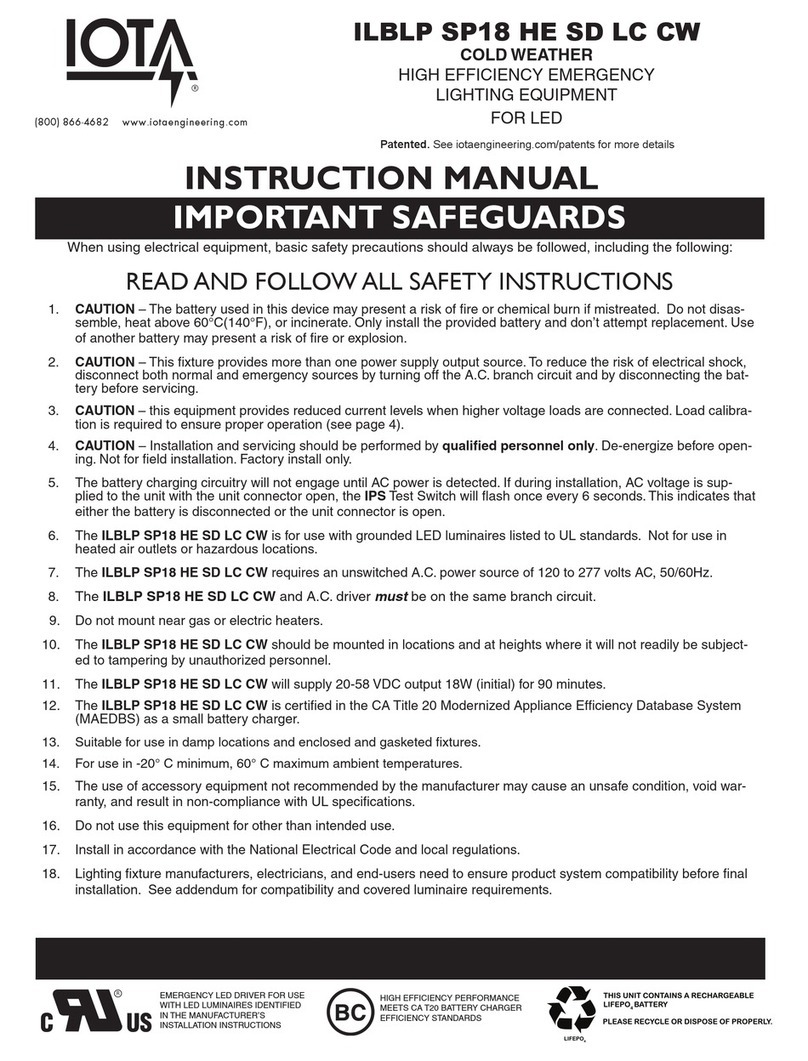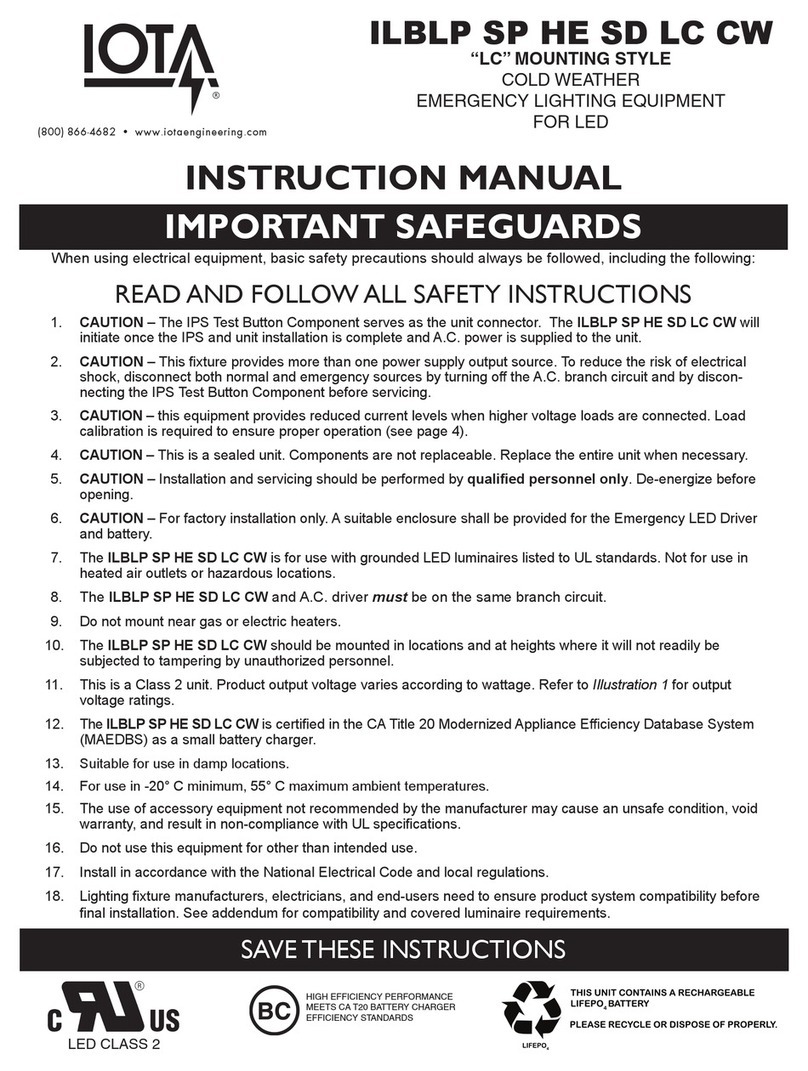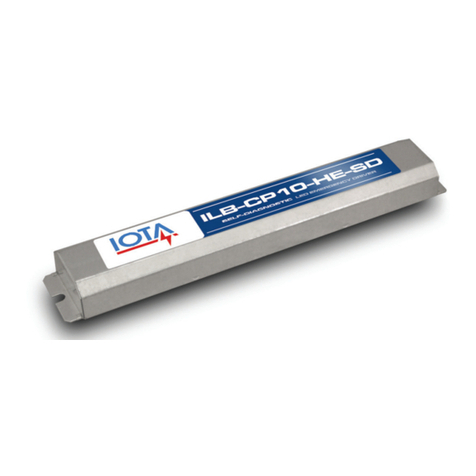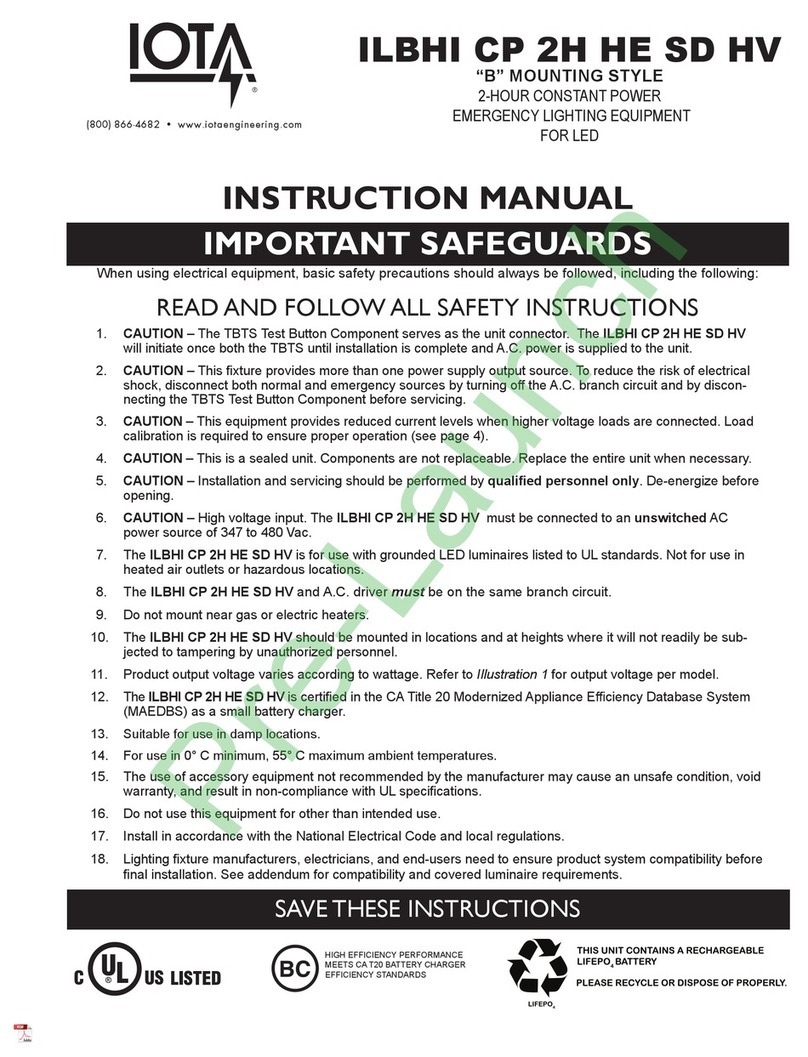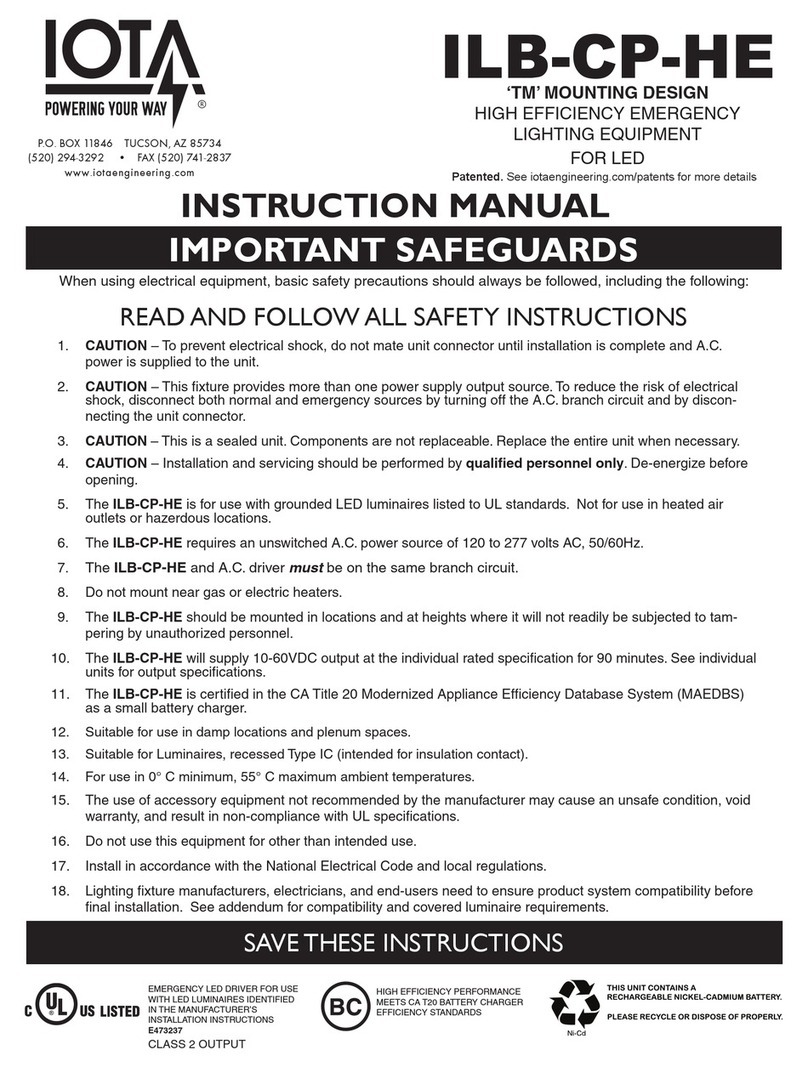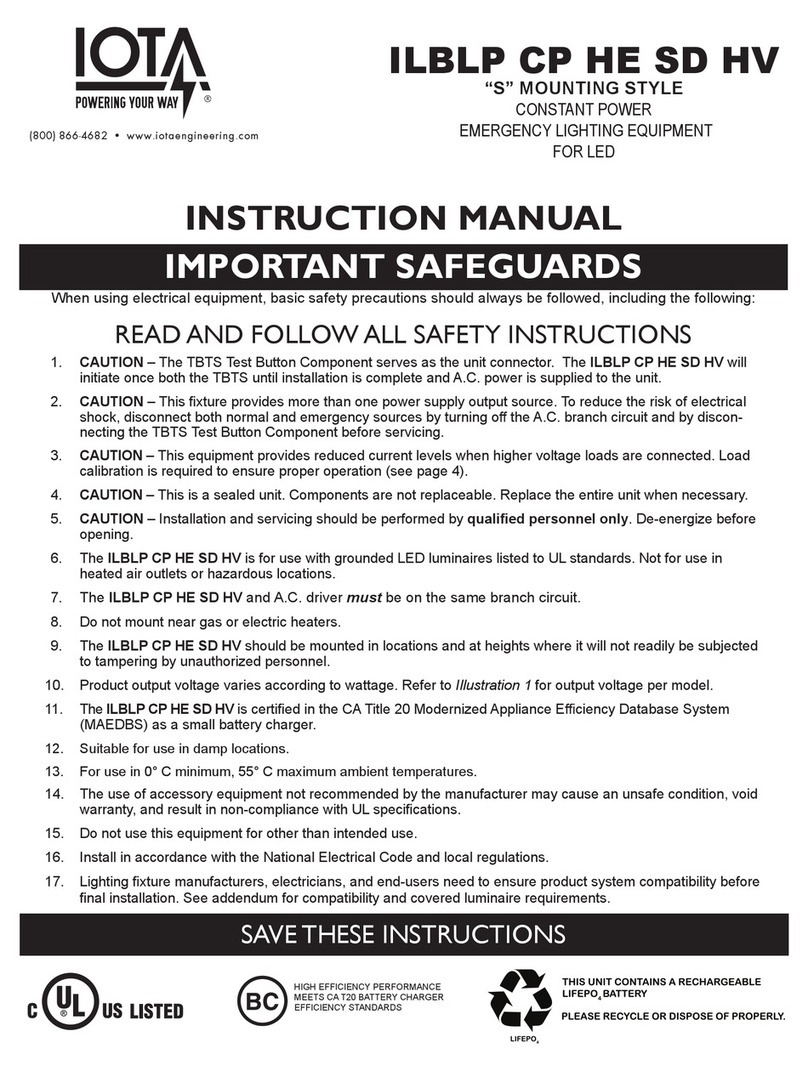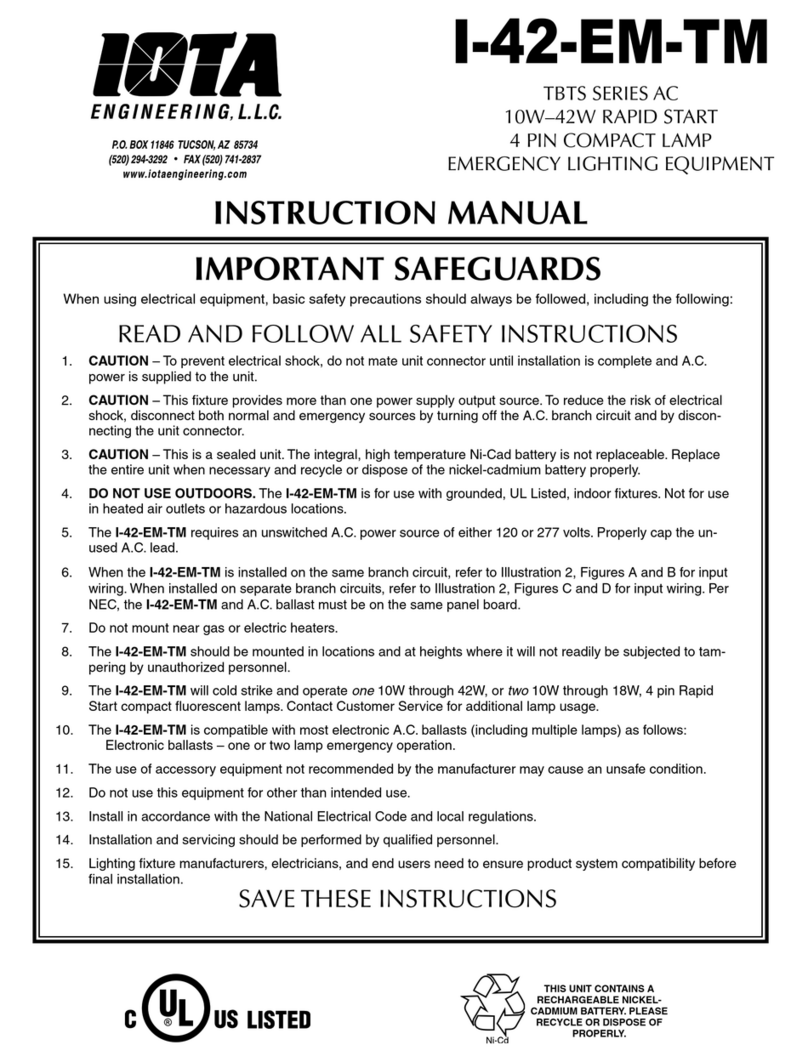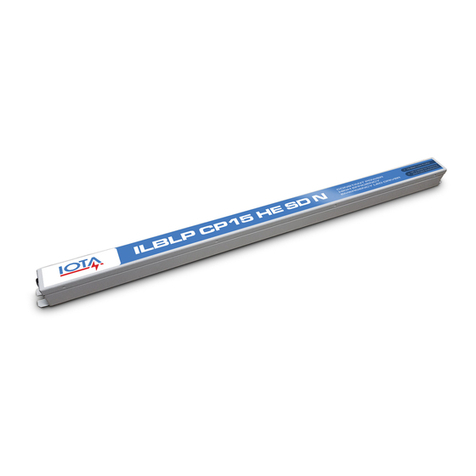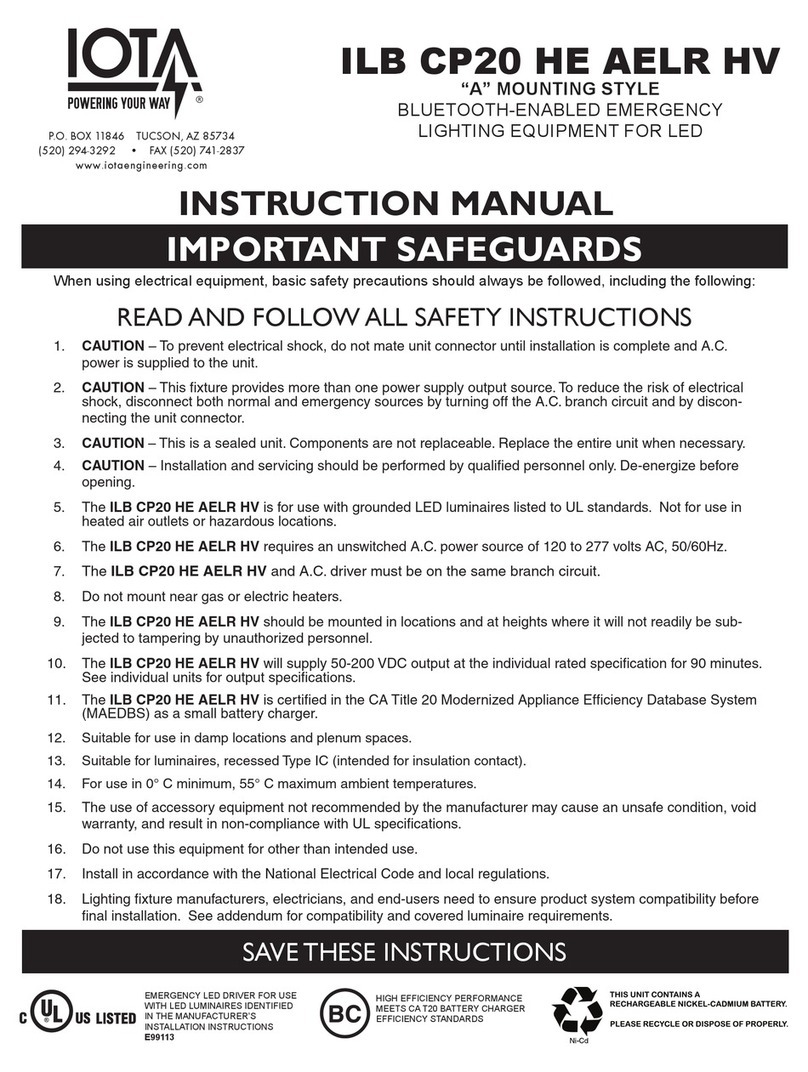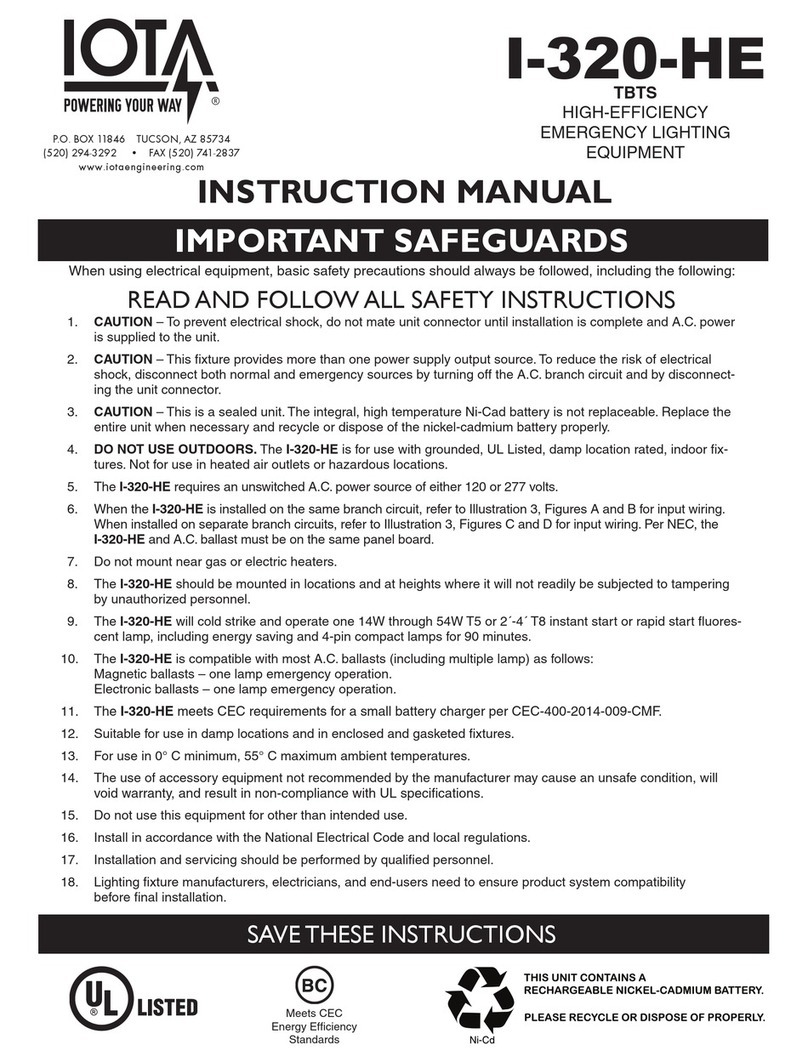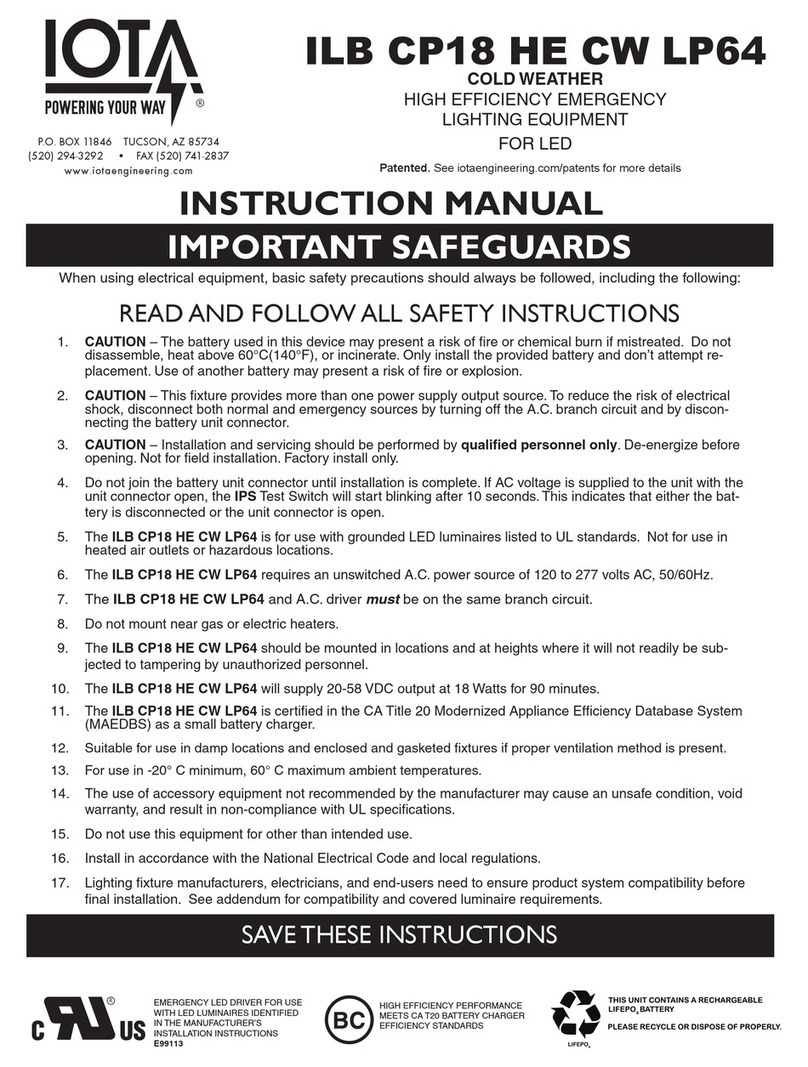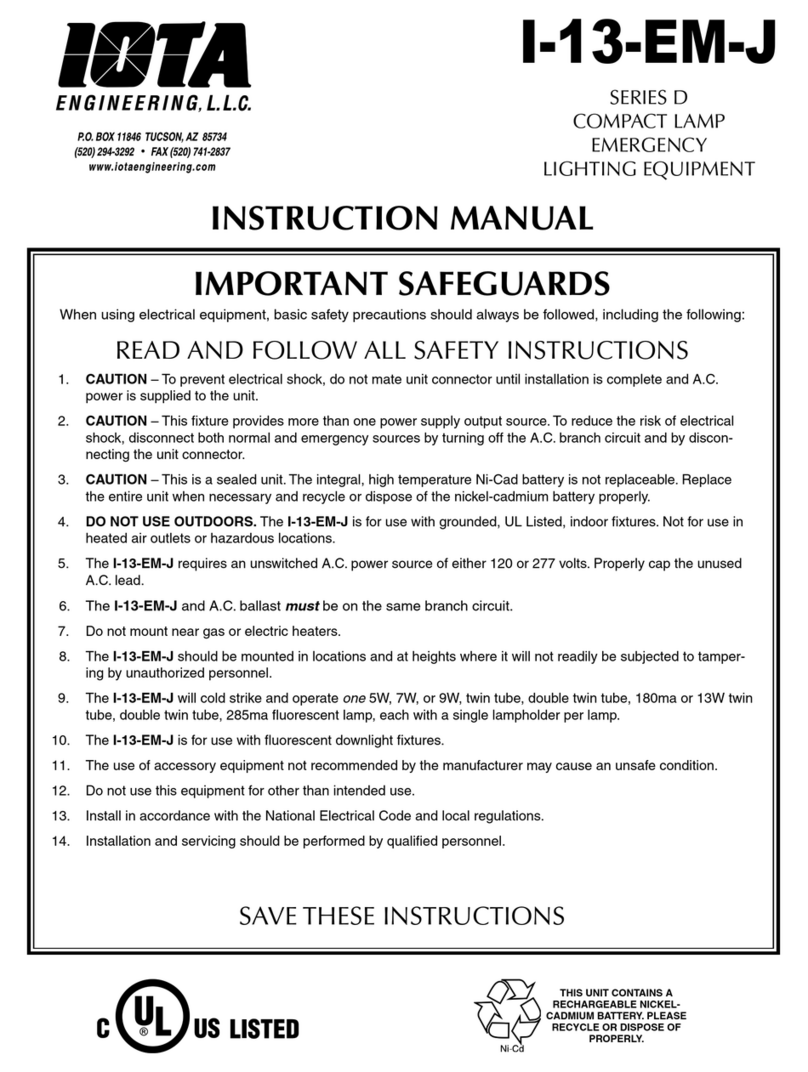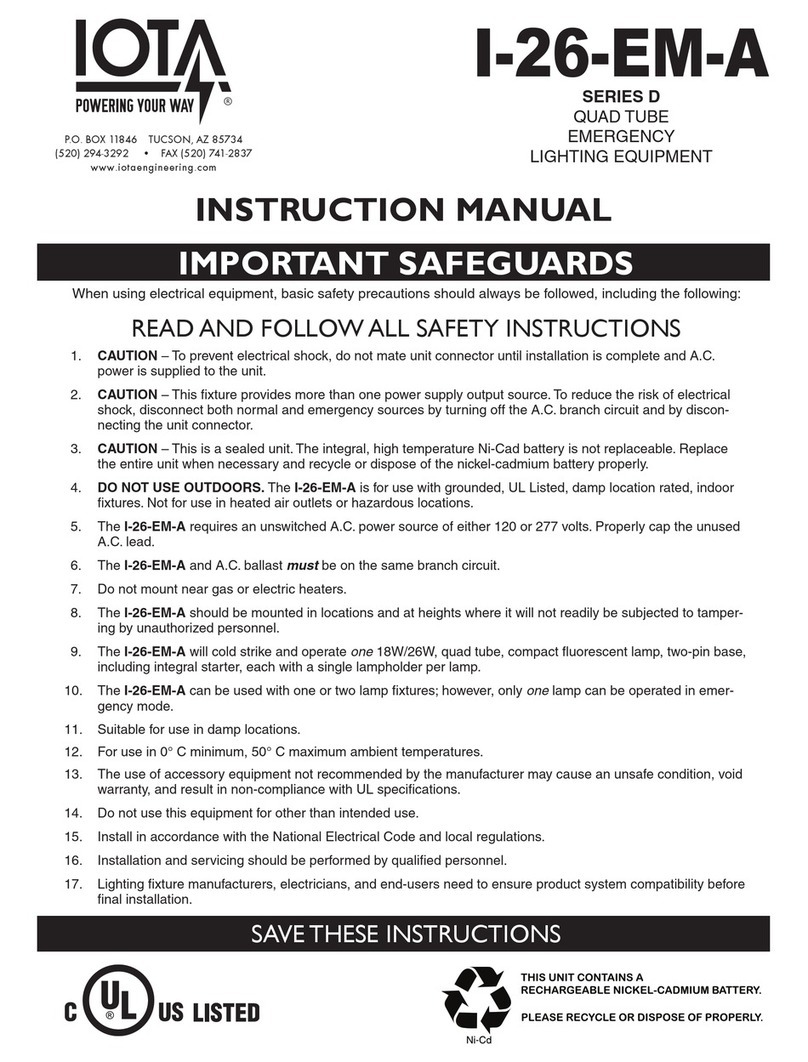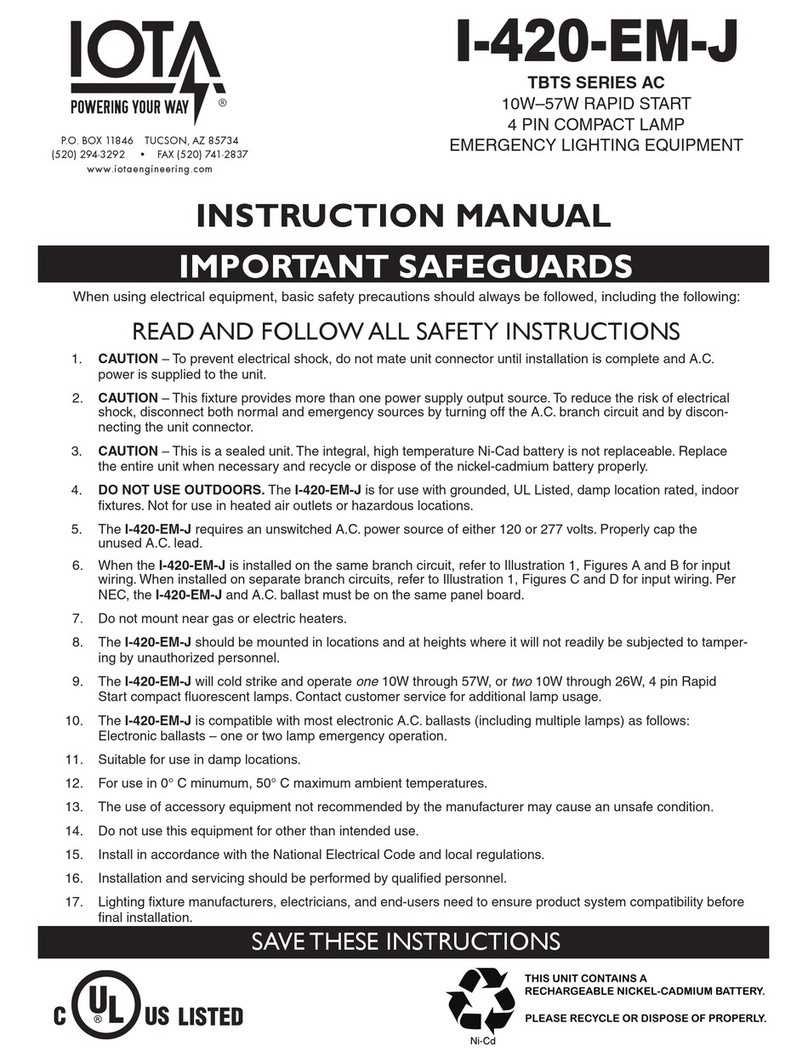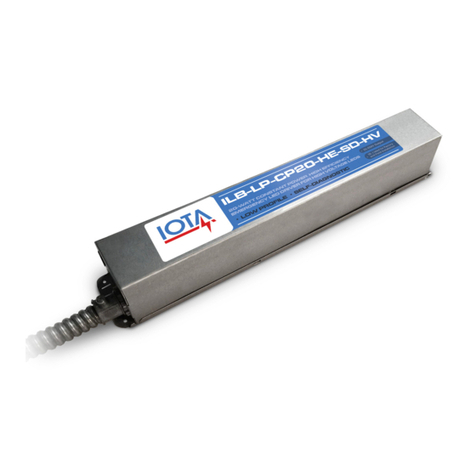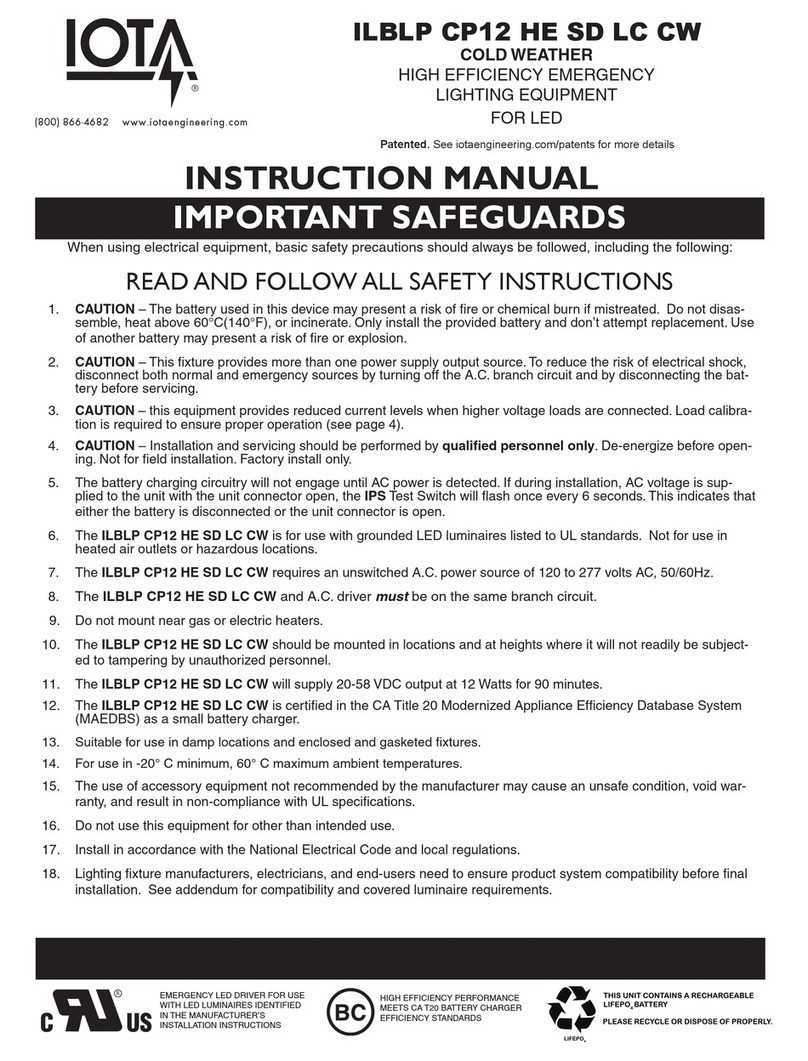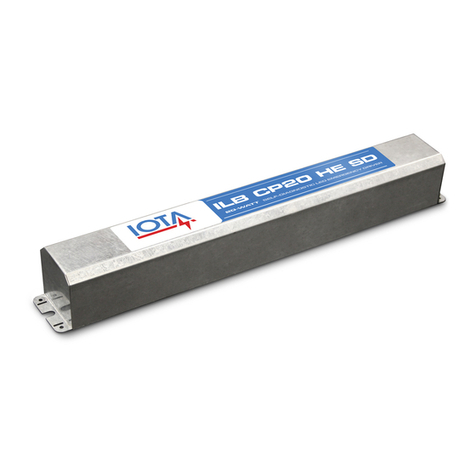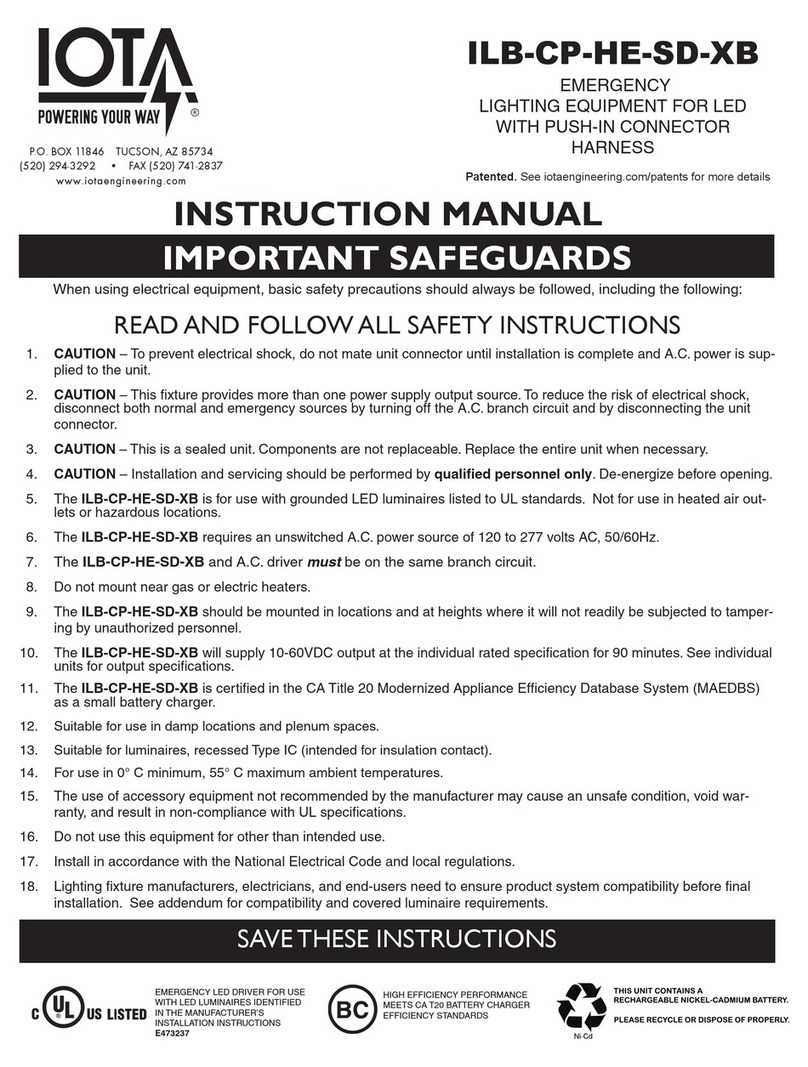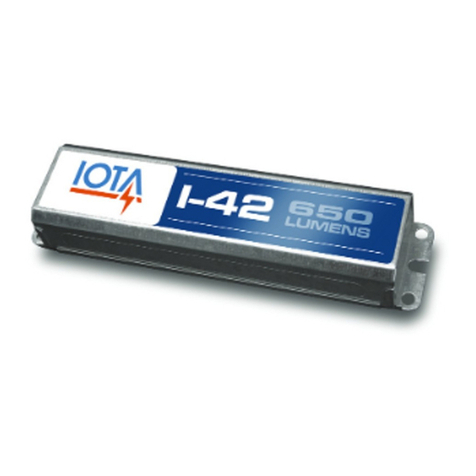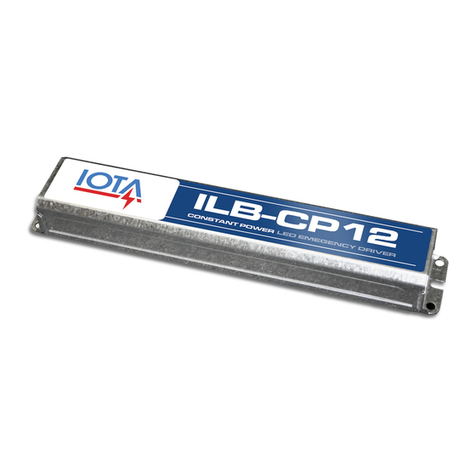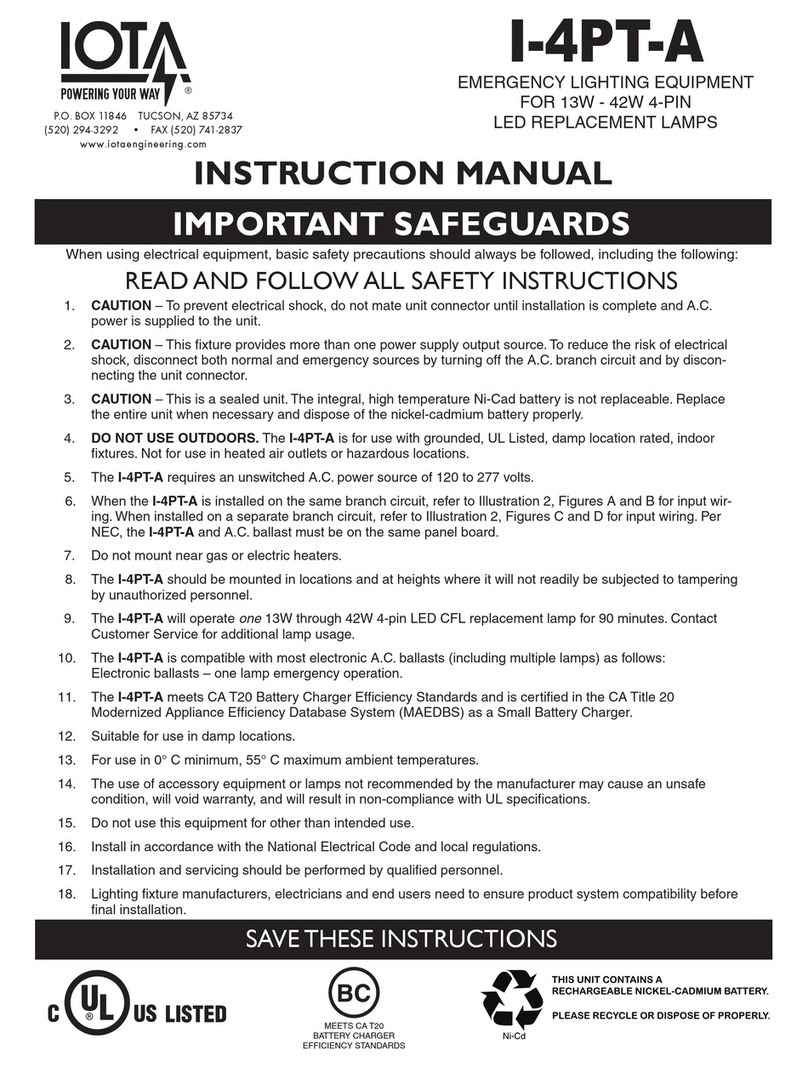
Page 4
Rev. 1900
68332-000
TESTING & MAINTENANCE
Pressing the TSPL turns off the light on the TSPL and forces the unit into emergency mode, interrupting power to the designated
A.C. ballast. The emergency lamp is now being lit by the P-32 unit. After releasing the TSPL, the fixture returns to normal operation
after a momentary delay.
Initial Testing – Allow the unit to charge approximately 2 hours, then press the TSPL to conduct a short discharge test. Allow a 24
hour charge before conducting a one hour test.
The P-32 is a maintenance free unit, however, periodic inspection and testing is required. NFPA 101, Life Safety Code, outlines the
following schedule:
Monthly – Insure that the TSPL is illuminated. Conduct a 30 second discharge test by depressing the TSPL. One lamp should oper-
ate at reduced output.
Annually – Insure that the TSPL is illuminated. Conduct a full 1½ hour discharge test. The unit should operate as intended for the
duration of the test.
“Written records of testing shall be kept by the owner for inspection by the authority having jurisdiction.”
SERVICING SHOULD BE PERFORMED BY QUALIFIED PERSONNEL.
Consult Customer Service or visit www.iotaengineering.com for current warranty information.
OPERATION
Normal Mode – A.C. power is present. The A.C. ballast operates the fluorescent lamp(s) as intended. The P-32 is in the standby
charging mode. The TSPL will be lit providing a visual indication that the battery is being charged.
Emergency Mode – The A.C. power fails. The P-32 senses the A.C. power failure and automatically switches to the Emergency
Mode. One lamp is illuminated, at reduced output, for a minimum of 90 minutes. When the A.C. power is restored, the P-32 switches
the system back to the Normal Mode and resumes battery charging. See page 1 of the Instruction Manual.
TROUBLESHOOTING
Problem Possible Cause
Emergency Lamp does not op-
erate when the TSPL Button is
pressed.
TSPL Charging LED
not on
Fixture does not operate in the
Normal Mode
1. Wiring to the lamp(s) is incorrect.
2. Lamp(s) are not inserted correctly.
3. Battery has not been charged for at least 1 hour.
4. TSPL is not inserted properly into the unit.
1. AC Power is Off
2. TSPL not inserted properly into the unit.
3. The wrong test accessory is being used.
1. Battery is not fully charged.
2. Wrong type or number of lamps connected
3. Battery is at end of life.
1. Wiring to the lamp(s) or normal ballast is incorrect.
2. Lamp(s) are not inserted correctly.
3. Lamp(s) are at end of life
4. AC power is off to the normal ballast (uses fixture switch)
Emergency Ballast does not
operate lamps in the emergen-
cy mode for at least 90 minutes.
STEP 5 - APPLY AC POWER AND CONNECT THE TSPL
A. Apply continuous AC power to the P-32, then connect and fully engage the TSPL Connector to the P-32. Insure the
TSPL connector latch is properly seated in the recess slot on the P-32 housing. Ensure that continuous AC power
has been applied to the P-32 before connecting the TSPL, or you will begin to drain the P-32 batteries and may hinder
proper emergency operation.
B. Verify that the TSPL light is on, then mark the TSPL location on the fixture with the TSPL label.
Caution: fixture contains live wires during
this portion of installation. Use insulated
gloves and tools
Coming Soon
